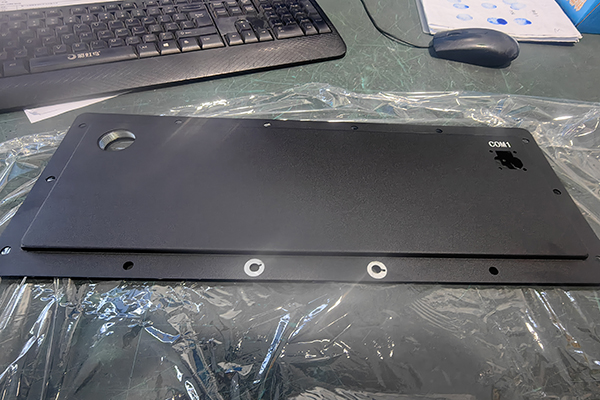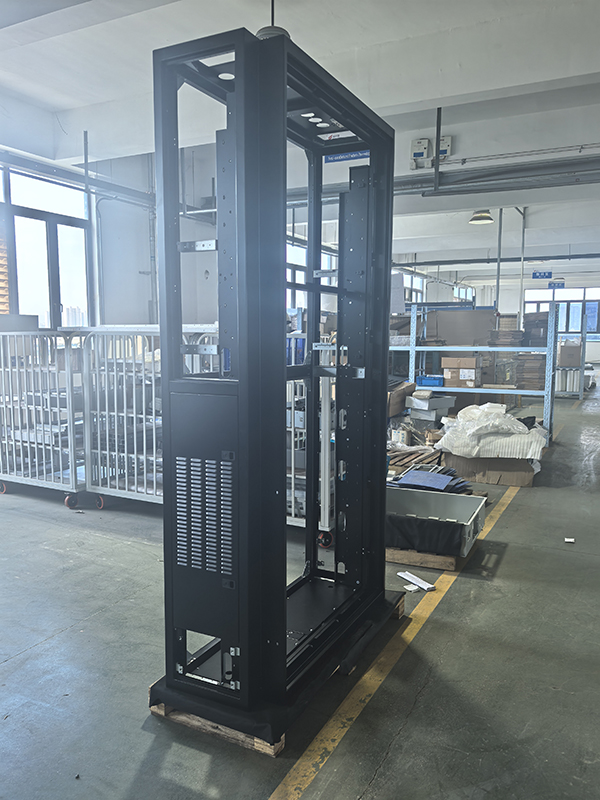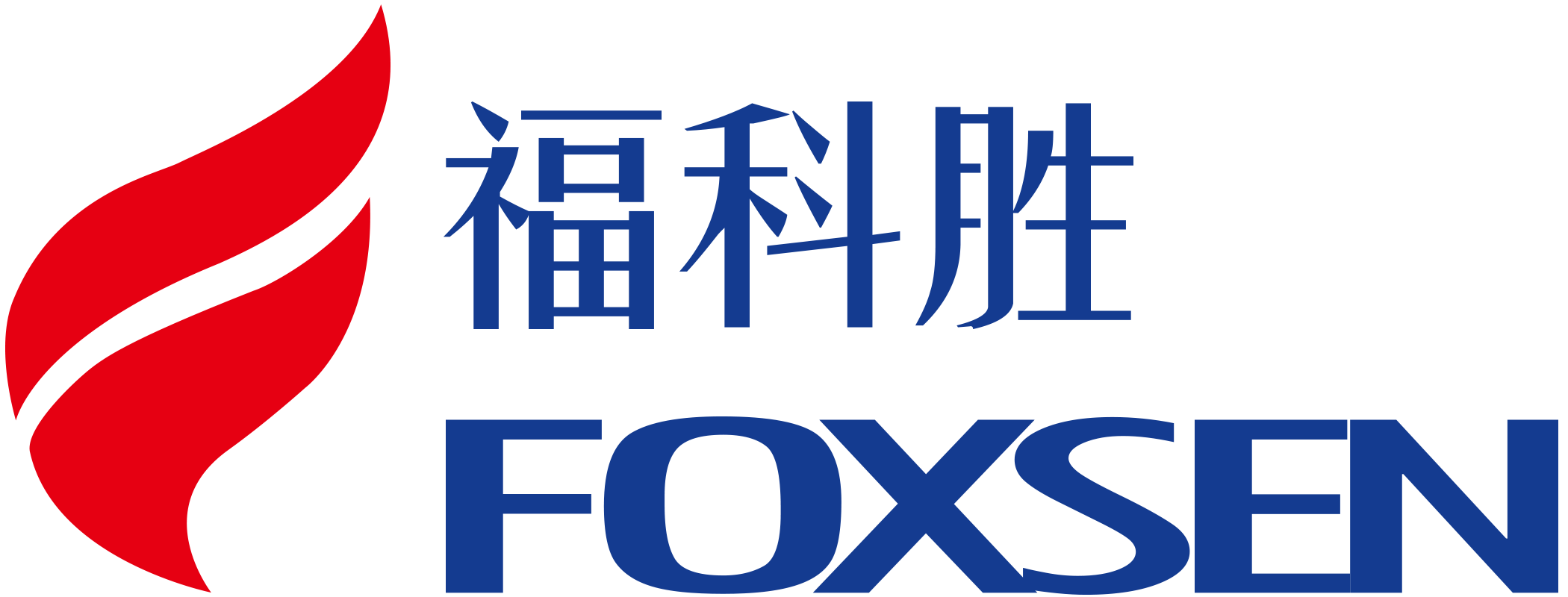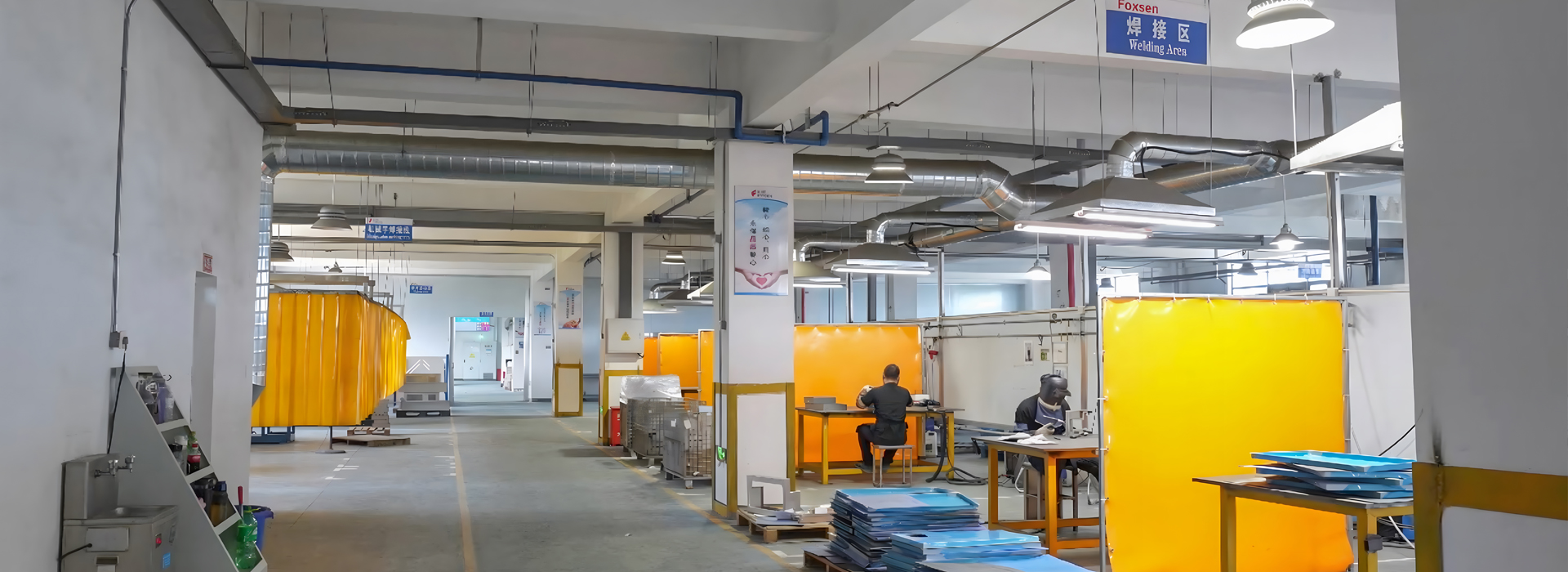The sheet metal switchgear enclosure is more than just a cabinet for electrical components. It plays a vital role in safeguarding circuit breakers, busbars, and control units from environmental hazards and operational risks. Choosing the right enclosure ensures long-term performance and reliability. You benefit from improved safety, reduced downtime, and lower maintenance costs. Modern designs also enhance operational efficiency by offering superior arc-interrupting technology and compliance with safety standards like NFPA 70E and IEEE 1584. By selecting an enclosure tailored to your needs, you protect your equipment while optimizing your power distribution system.
Key Takeaways
Picking the right metal box keeps electrical parts safe and working.
The material matters: stainless steel is strong and rust-proof, aluminum is light and cheap, and galvanized steel is budget-friendly and useful.
Think about where it will be used: indoor boxes need less protection, but outdoor ones must be tough and weatherproof.
Look at the design for easy use and fixing; boxes with doors and panels that open make repairs quicker.
Following rules like UL and NEMA makes sure it's safe and works well, so check for the right certifications for your needs.
Material Selection for Sheet Metal Enclosures

Choosing the right material for sheet metal enclosures is crucial for ensuring their durability and functionality. Each material offers unique benefits, making it suitable for specific applications. Below, you’ll find an overview of three popular materials: stainless steel, aluminum, and galvanized steel.
Stainless Steel: Durability and Corrosion Resistance
Stainless steel is a top choice when you need an enclosure that can withstand harsh environments. Its natural corrosion resistance makes it ideal for outdoor applications or areas exposed to moisture, chemicals, or salt. This material maintains its structural integrity over time, even in extreme conditions.
You’ll also appreciate its strength and durability. Stainless steel enclosures can handle physical impacts without deforming, ensuring long-term protection for your electrical components. While it may come at a higher cost, the investment pays off through reduced maintenance and extended lifespan.
Tip: Stainless steel is perfect for industries like food processing, pharmaceuticals, and marine applications, where hygiene and corrosion resistance are critical.
Aluminum: Lightweight and Cost-Effective
If you’re looking for a lightweight yet sturdy option, aluminum is an excellent choice. Its low density makes it easy to transport and install, especially for large enclosures. Despite being lightweight, aluminum offers impressive strength and can endure moderate environmental challenges.
Another advantage is its natural resistance to rust. While not as robust as stainless steel in highly corrosive environments, aluminum performs well in less demanding conditions. It’s also a cost-effective option, making it suitable for projects with budget constraints.
Note: The rising demand for lightweight materials in industries like automotive and aerospace highlights aluminum’s growing importance. Its use improves fuel efficiency and reduces emissions, aligning with modern sustainability goals.
Galvanized Steel: Affordable and Versatile
Galvanized steel combines affordability with excellent corrosion resistance, thanks to its protective zinc coating. This material is a popular choice for outdoor enclosures, as it can withstand exposure to rain and humidity without rusting.
Its durability makes it suitable for harsh environments, including construction sites and industrial facilities. Galvanized steel enclosures provide long-lasting protection for your electrical systems, ensuring reliability even in challenging conditions.
For projects requiring a balance between cost and performance, galvanized steel stands out as a practical option. Its versatility ensures it meets the needs of various industries, from infrastructure development to manufacturing.
Carbon Steel and Composite Materials: Specialized Applications
When it comes to specialized applications, carbon steel and composite materials offer unique advantages for sheet metal enclosures. These materials cater to industries with specific requirements, such as heavy-duty performance or lightweight construction.
Carbon Steel: Strength and Versatility
Carbon steel stands out for its exceptional strength and versatility. This material is ideal for applications requiring enclosures that can endure high mechanical stress. Its robust nature makes it a popular choice in industries like manufacturing, transportation, and energy.
You’ll find carbon steel enclosures particularly useful in environments where impact resistance is critical. For example, they perform well in industrial facilities with heavy machinery or construction sites with frequent equipment movement.
Tip: To enhance corrosion resistance, carbon steel enclosures often feature protective coatings like powder coating or galvanization. These treatments extend the lifespan of the enclosure, even in challenging conditions.
While carbon steel may not offer the same level of corrosion resistance as stainless steel, its affordability and strength make it a practical option for many projects. If your application involves indoor use or controlled environments, carbon steel provides a cost-effective solution without compromising durability.
Composite Materials: Lightweight and Innovative
Composite materials represent a modern approach to designing sheet metal enclosures. These materials combine two or more components, such as fiberglass and resin, to create a product with enhanced properties.
One of the most significant benefits of composite materials is their lightweight nature. This feature makes them easy to handle and install, especially for large-scale projects. Despite their low weight, composites deliver impressive strength and resistance to environmental factors.
Composite enclosures excel in industries like telecommunications, renewable energy, and aerospace. Their ability to withstand extreme temperatures and resist UV radiation makes them a reliable choice for outdoor applications.
Note: While composite materials may have a higher upfront cost, their durability and low maintenance requirements often result in long-term savings.
Choosing the Right Material for Your Needs
Selecting between carbon steel and composite materials depends on your specific application. If you prioritize strength and affordability, carbon steel is a solid choice. For projects requiring lightweight construction and advanced environmental resistance, composite materials offer unmatched performance.
By understanding the unique benefits of these materials, you can make an informed decision that ensures your sheet metal enclosures meet the demands of your industry.
Environmental and Application Requirements for Switchgear
When selecting a sheet metal enclosure for your switchgear, understanding the environmental and application requirements is essential. The right enclosure ensures your electrical components remain safe and functional, regardless of the conditions they face. Below, you’ll find key factors to consider for different environments and applications.
Indoor vs. Outdoor Applications
The location of your switchgear plays a significant role in determining the type of enclosure you need. Indoor and outdoor environments present unique challenges, and your enclosure must address these effectively.
For indoor applications, focus on enclosures that provide protection against dust, accidental impacts, and potential moisture from HVAC systems or plumbing leaks. These enclosures often require lower ingress protection (IP) ratings, as they are shielded from extreme weather conditions. However, they should still offer structural integrity and easy access for maintenance.
Outdoor applications demand enclosures with higher durability and weather resistance. Exposure to rain, UV rays, and fluctuating temperatures can compromise the performance of your switchgear. Look for enclosures with robust sealing mechanisms and high IP ratings to guard against water ingress and dust. Materials like stainless steel or galvanized steel are excellent choices for outdoor use due to their corrosion resistance.
Tip: Always assess the specific environmental conditions of your installation site. For example, coastal areas may require additional protection against saltwater corrosion.
Corrosion Resistance for Harsh Environments
Corrosion resistance is a critical factor when your switchgear operates in harsh environments. Corrosion can weaken the enclosure, leading to equipment failure and safety hazards. Choosing the right material ensures long-term reliability and reduces maintenance costs.
Stainless steel offers exceptional corrosion resistance, making it ideal for environments exposed to moisture, chemicals, or salt. Galvanized steel, with its protective zinc coating, provides a cost-effective alternative for moderate conditions. For extreme environments, composite materials can deliver superior performance, as they resist rust and chemical damage.
Industries like food processing, pharmaceuticals, and marine applications often require enclosures with high corrosion resistance. These environments expose equipment to aggressive cleaning agents, humidity, or saltwater, which can accelerate corrosion. Selecting the right material ensures your switchgear remains protected and operational.
Note: Regular maintenance, such as cleaning and inspecting the enclosure, can further enhance its lifespan in corrosive environments.
Temperature and Thermal Management
Temperature fluctuations and heat buildup can significantly impact the performance of your switchgear. Effective thermal management is essential to prevent overheating and ensure the longevity of your electrical components.
For indoor applications, consider enclosures with built-in ventilation systems or cooling fans. These features help dissipate heat generated by the equipment, maintaining optimal operating temperatures. Outdoor enclosures may require additional insulation to protect against extreme heat or cold.
In high-temperature environments, materials like aluminum can help, as they dissipate heat more effectively than other metals. For applications involving sensitive electronics, you might need enclosures with active cooling systems, such as air conditioners or heat exchangers.
Callout: Overheating can lead to equipment failure and costly downtime. Always evaluate the thermal requirements of your switchgear before selecting an enclosure.
By addressing these environmental and application requirements, you can ensure your sheet metal enclosures provide the necessary protection and performance for your switchgear. Whether you’re dealing with indoor or outdoor installations, harsh environments, or temperature challenges, the right enclosure makes all the difference.
Protection Against Dust, Water, and Chemicals
Electrical systems often face threats from environmental contaminants like dust, water, and chemicals. These elements can compromise the performance and safety of your switchgear. Choosing the right enclosure ensures your equipment remains protected and operational in challenging conditions.
Dust Protection
Dust can infiltrate electrical systems and cause overheating or short circuits. Enclosures with high ingress protection (IP) ratings effectively block dust particles. For dusty environments, look for enclosures rated IP5X or higher. These ratings indicate strong resistance to solid particles.
Tip: If your switchgear operates in areas like factories or workshops, prioritize enclosures with dust-tight seals to prevent equipment damage.
Water Resistance
Water exposure can lead to corrosion and electrical hazards. Enclosures designed for wet environments feature robust sealing mechanisms to prevent water ingress. For outdoor installations, select enclosures with IP ratings like IP65 or IP66. These ratings ensure protection against heavy rain and water jets.
Callout: Coastal areas or regions with frequent rainfall demand enclosures with enhanced water resistance. Stainless steel enclosures excel in these conditions due to their corrosion-resistant properties.
Chemical Resistance
Chemicals can degrade materials and compromise the structural integrity of enclosures. Industries like food processing and pharmaceuticals often expose switchgear to cleaning agents or chemical fumes. Enclosures made from stainless steel or composite materials resist chemical damage effectively.
For environments with aggressive chemicals, consider enclosures with specialized coatings. Powder-coated sheet metal enclosures offer an additional layer of protection, extending their lifespan in harsh conditions.
Selecting the Right Enclosure
To protect against dust, water, and chemicals, evaluate the specific risks in your environment. Match the enclosure’s IP rating and material to the challenges your switchgear faces. By choosing the right enclosure, you ensure the safety and reliability of your electrical system.
Design and Functional Features of Sheet Metal Switchgear Enclosures

Durability and Structural Integrity
Durability is a key factor in ensuring your enclosure performs reliably over time. A well-designed enclosure resists physical impacts, vibrations, and environmental stress. Materials like stainless steel and galvanized steel provide excellent strength, making them ideal for demanding applications.
Structural integrity is equally important. The enclosure design must withstand external forces without compromising its shape or protective capabilities. Reinforced corners, precision welding, and robust locking mechanisms enhance the enclosure's ability to protect sensitive electrical components.
Tip: When evaluating durability, consider the enclosure's ability to handle transportation, installation, and daily operation without damage.
Accessibility and Maintenance Features
Accessibility plays a vital role in simplifying maintenance tasks. Enclosures with hinged doors, removable panels, and ergonomic handles make it easier for you to access internal components. These features reduce downtime and improve operational efficiency.
Maintenance-friendly designs also include clear labeling and organized layouts for wiring and equipment. This ensures you can quickly identify and address issues. Enclosures with modular designs allow you to replace or upgrade parts without disrupting the entire system.
Callout: Choose an enclosure design that prioritizes accessibility to save time and reduce maintenance costs.
Ventilation and Thermal Management Systems
Effective ventilation is crucial for maintaining optimal temperatures inside your enclosure. Heat buildup can damage electrical components and reduce their lifespan. Ventilation systems, such as louvers or perforated panels, allow air to circulate and prevent overheating.
For applications with high heat output, consider enclosures equipped with active cooling systems like fans or heat exchangers. These systems enhance functionality by keeping your equipment within safe operating temperatures.
Materials also play a role in thermal management. Aluminum enclosures dissipate heat efficiently, making them suitable for environments with fluctuating temperatures.
Note: Proper ventilation and thermal management ensure your enclosure operates reliably, even in challenging conditions.
Customization Options for Specific Needs
Every application has unique requirements, and your switchgear enclosure should reflect those needs. Customization allows you to tailor the enclosure design to meet specific operational, environmental, and safety demands. By choosing custom features, you ensure your enclosure performs optimally in its intended setting.
Tailored Dimensions and Layouts
Standard enclosures may not always fit your equipment or space constraints. Custom dimensions allow you to optimize the enclosure design for your available space. You can also specify internal layouts to accommodate unique wiring configurations or additional components. This ensures efficient use of space and simplifies maintenance.
Material and Coating Choices
Different environments demand specific materials. For example, stainless steel works well in corrosive settings, while aluminum suits lightweight applications. You can also select specialized coatings, such as powder coating, to enhance durability and resistance to environmental factors. These choices improve the enclosure’s lifespan and reliability.
Advanced Functional Features
Custom enclosures can include advanced features like integrated ventilation systems, cable entry points, or mounting options. These additions improve functionality and ensure the enclosure design aligns with your operational needs. For instance, industries requiring frequent access to internal components benefit from hinged doors or removable panels.
Industry-Specific Requirements
Certain industries have strict standards for safety and performance. Customization ensures your enclosure complies with these regulations. For example, food processing facilities may require enclosures with smooth surfaces for easy cleaning, while telecommunications may need enclosures with superior thermal management.
Tip: Collaborate with experts to design an enclosure that meets your exact specifications. This ensures long-term efficiency and safety.
By customizing your enclosure design, you create a solution tailored to your application. This approach enhances performance, reduces downtime, and ensures compliance with industry standards.
Compliance and Standards for Switchgear Enclosures
Understanding IP Ratings and Their Importance
IP ratings, or Ingress Protection ratings, measure how well an enclosure protects against dust and water. These ratings consist of two numbers. The first indicates protection against solid objects like dust, while the second shows resistance to liquids. For example, an IP65-rated enclosure offers complete dust protection and resistance to water jets.
When selecting an enclosure for your switchgear, consider the environmental conditions. Dusty industrial sites require enclosures with high solid particle resistance, such as IP5X or higher. Outdoor installations exposed to rain or snow need enclosures with water resistance, like IP66. Choosing the right IP rating ensures your switchgear remains safe and operational in challenging environments.
Tip: Always match the IP rating to the specific risks at your installation site to maximize protection.
EMC (Electromagnetic Compatibility) Considerations
Electromagnetic compatibility (EMC) ensures your switchgear operates without interference from or causing interference to other devices. Poor EMC can lead to malfunctions, especially in environments with high electromagnetic activity, such as factories or data centers.
To address EMC, choose enclosures designed with shielding features. These enclosures block electromagnetic waves, protecting sensitive components inside. Materials like stainless steel or aluminum enhance shielding effectiveness. Additionally, proper grounding and cable management within the enclosure further reduce interference risks.
Callout: EMC compliance is critical for industries relying on precise electronic systems, such as telecommunications and healthcare.
UL and NEMA Standards for Safety and Performance
UL and NEMA standards ensure enclosures meet safety and performance benchmarks. UL focuses on fire resistance, mechanical hazards, and durability, while NEMA evaluates environmental factors like dust, water, and corrosion resistance.
For North American installations, UL-certified enclosures provide assurance of safety and reliability. NEMA ratings, such as NEMA 4X, indicate suitability for corrosive or wet environments. By selecting enclosures that meet these standards, you ensure compliance and long-term performance.
Note: Always verify the required certifications for your industry to avoid non-compliance issues.
Industry-Specific Certifications and Requirements
When selecting a sheet metal switchgear enclosure, you must consider certifications and requirements specific to your industry. These certifications ensure the enclosure meets safety, performance, and environmental standards tailored to your operational needs. Below are some key industry-specific certifications to guide your decision.
1. Food and Beverage Industry
In food processing facilities, hygiene and cleanliness take priority. Enclosures in this industry often require compliance with NSF (National Sanitation Foundation) standards. These standards ensure the enclosure resists contamination and supports easy cleaning. Smooth surfaces and corrosion-resistant materials like stainless steel are essential.
Tip: Choose enclosures with rounded edges and seamless designs to prevent bacteria buildup.
2. Pharmaceutical and Medical Sectors
The pharmaceutical and medical industries demand strict adherence to safety and sterility. Enclosures must comply with FDA (Food and Drug Administration) guidelines and ISO 14644 standards for cleanroom environments. These certifications ensure the enclosure minimizes particle contamination and withstands exposure to cleaning agents.
3. Oil and Gas Industry
In hazardous environments like oil rigs or refineries, safety is critical. Enclosures must meet ATEX (Atmosphères Explosibles) or IECEx certifications for explosion-proof designs. These certifications confirm the enclosure can operate safely in areas with flammable gases or dust.
4. Telecommunications and Data Centers
For telecommunications, enclosures must meet NEBS (Network Equipment-Building System) standards. These standards ensure the enclosure can handle high electromagnetic interference and temperature fluctuations. Proper thermal management features are also crucial for maintaining equipment performance.
Callout: Always verify the certifications required for your industry. This ensures compliance and protects your investment.
By understanding these certifications, you can select an enclosure that aligns with your industry’s unique demands. This approach guarantees safety, reliability, and long-term performance.
Cost and Budget Considerations for Sheet Metal Enclosures
Balancing Quality and Affordability
When choosing a switchgear enclosure, balancing quality and affordability is essential. High-quality enclosures often come with a higher price tag, but they provide better protection and durability. Investing in a reliable enclosure design ensures your equipment remains safe and operational for years. However, you should also consider your budget constraints. Striking the right balance between cost and performance helps you avoid overspending while meeting your operational needs.
To make an informed decision, evaluate the specific requirements of your application. For example, outdoor installations may demand corrosion-resistant materials like stainless steel, which are more expensive. On the other hand, indoor applications might allow for more affordable options like galvanized steel or aluminum. By aligning your choice with your environment and functionality needs, you can achieve both quality and cost-effectiveness.
Long-Term Cost Savings Through Durability
Durability plays a significant role in reducing long-term costs. A robust enclosure design minimizes the need for frequent repairs or replacements, saving you money over time. Materials like stainless steel and galvanized steel offer excellent durability, making them ideal for harsh environments. These materials resist corrosion, physical impacts, and environmental stress, ensuring your switchgear remains protected.
While durable enclosures may require a higher initial investment, they often result in significant savings. For instance, a stainless steel enclosure might cost more upfront, but its long lifespan and low maintenance requirements offset the initial expense. Choosing a durable enclosure not only protects your equipment but also reduces downtime and maintenance costs, enhancing overall efficiency.
Tip: Always consider the total cost of ownership, including maintenance and replacement expenses, when evaluating enclosure options.
Comparing Costs of Different Materials
Understanding the cost-benefit of various materials helps you select the most suitable enclosure for your budget. The table below highlights the pros and cons of common materials used in enclosure design:
Aluminum offers a cost-effective solution for lightweight applications, while steel provides unmatched strength for heavy-duty use. Stainless steel is ideal for environments requiring high corrosion resistance, though it comes at a premium. Plastic enclosures, while affordable, may lack the durability needed for demanding conditions. By comparing these options, you can choose a material that aligns with your budget and functionality requirements.
Choosing Between Custom and Standard Enclosures
When selecting a sheet metal switchgear enclosure, you must decide between custom and standard options. Each choice offers unique advantages depending on your application, budget, and operational needs.
Benefits of Standard Enclosures
Standard enclosures are pre-designed and readily available. These enclosures work well for common applications where specific customization isn’t necessary.
Cost-Effective: Standard enclosures are mass-produced, making them more affordable.
Quick Availability: You can often purchase and install them immediately.
Proven Designs: Manufacturers test these enclosures extensively, ensuring reliability.
Tip: Standard enclosures are ideal for straightforward projects with tight deadlines or limited budgets.
Advantages of Custom Enclosures
Custom enclosures allow you to tailor the design to your exact requirements. This option works best for specialized applications or unique environmental challenges.
Tailored Fit: Custom dimensions and layouts ensure compatibility with your equipment.
Enhanced Features: You can add advanced options like ventilation systems, cable entry points, or specific coatings.
Industry Compliance: Custom designs help meet strict industry standards or certifications.
Making the Right Choice
Your decision depends on your project’s complexity and priorities. If you need a quick, affordable solution, standard enclosures are a practical choice. For unique applications requiring specific features or compliance, custom enclosures provide the flexibility you need.
Callout: Consult with experts to evaluate your requirements. This ensures you choose the enclosure that delivers the best performance and value.
By weighing the benefits of each option, you can select the enclosure that aligns with your operational goals.
Choosing the right sheet metal switchgear enclosure is essential for protecting your electrical systems and ensuring long-term reliability. By evaluating factors like material, environmental conditions, design features, compliance standards, and cost, you can make an informed decision that meets your specific needs. Each enclosure offers unique benefits, so understanding your operational environment is key.
Start by analyzing where and how your switchgear will operate. Consider the challenges it might face, such as dust, water, or temperature extremes. From there, work backward to identify the most suitable enclosure. Consulting with experts, like those at Foxsen, can help you tailor a solution that ensures safety and performance.
Tip: A well-chosen sheet metal switchgear enclosure not only protects your equipment but also reduces downtime and maintenance costs.
FAQ
What is the purpose of a sheet metal switchgear enclosure?
A sheet metal switchgear enclosure protects electrical components from environmental hazards like dust, water, and impacts. It ensures operational safety, prevents equipment damage, and enhances the reliability of your electrical system.
How do I determine the right material for my enclosure?
Evaluate your environment and application. For corrosive settings, choose stainless steel. For lightweight needs, go with aluminum. Galvanized steel works well for cost-effective outdoor use. Match the material to your specific conditions.
What does an IP rating mean for enclosures?
An IP rating measures protection against dust and water. For example, IP65 ensures complete dust resistance and protection from water jets. Higher ratings indicate better environmental protection for your switchgear.
Can I customize my switchgear enclosure?
Yes, you can customize dimensions, materials, coatings, and features like ventilation or cable entry points. Customization ensures the enclosure meets your specific operational and environmental needs.
Why is compliance with standards important?
Compliance ensures safety, reliability, and adherence to industry regulations. Standards like UL, NEMA, and ATEX verify that the enclosure can handle specific environmental and operational challenges.





